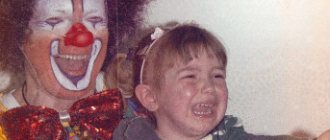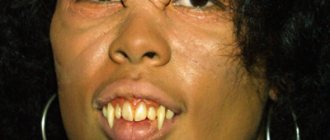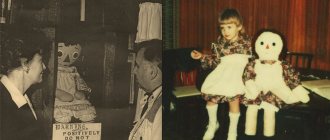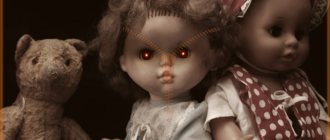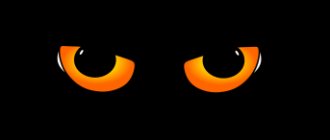It would seem how the sky, strewn with sparkling stars and evoking romantic associations in us, can be associated with fear. However, it can. There are people who experience a panicky fear of space, stars and stellar space. What features does astrophobia have? Astrophobia is a phobia that causes fear of everything related to the stars and outer space.
First of all, this disease manifested itself in famous masterpieces of world cinema, which depict fear of aliens, spaceships and meteorites. However, astrophobia can also be intertwined with other phobias. Let's say with plakophobia - fear of cemeteries and tombstones. People susceptible to this disease believe that monuments can predict global disasters and associate this with celestial space. And yes, this happens in real life too.
Causes of Astrophobia
There are several causes of astrophobia:
- Hereditary factor. If someone in your family suffered from this phobia, then you could inherit it too.
- Childhood psychotrauma. For example, an unsuccessful excursion to the planetarium or horror stories from adults. Or the child could get lost in the evening.
- Trauma in adult life. For example, an attack by a robber in the evening. Or an unpleasant conversation under the moonlight. Or any other emotional shock during which a person paid attention to the starry sky (through a window or on the street).
- Learning. You could have adopted someone else's fear due to suggestibility and impressionability. Stellar disasters and aliens are talked about in science fiction books and films. And the fact that after death every person is reunited with the cosmos is written in scientific literature. Some people believe that the stars are the souls of those who are no longer alive.
- Professional costs. Relatives of astronauts worry about their lives, and therefore perceive space as a threat. And the astronauts themselves can develop a phobia after an unsuccessful flight or an accident at work.
If another fear is disguised behind astrophobia, then you need to look for its deep reasons. For example, it may actually be a fear of darkness or loneliness that arose after punishment in childhood (parents locked the child alone, only moonlight penetrated the room or the light bulbs on the ceiling resembled stars). Or it may be that the ceiling of the children's room was decorated to resemble a starry sky; in this room the child was constantly subjected to humiliation and violence from adults.
This is interesting! General exhaustion and depression are another negative prerequisite. People in a state of chronic stress are more susceptible to anxiety and fear.
Treatment methods
Psychologists are confident that astrophobia is not a mental disorder at all, but a consequence of watching science fiction films or reading books. In the mildest forms, a conversation with a psychologist is sufficient, who should explain:
- the fear of looking at the sky is associated solely with ignorance of what is happening in it and the fear of a non-existent threat;
- emerging thoughts and fantasies, fear of stars and cosmic bodies are just a figment of a vivid imagination and a transfer of images from cinema and literature into real life.
The most popular methods are hypnotherapy, neurolinguistic programming, and psychotherapy. To enhance the therapeutic effect in severe cases of astrophobia, the doctor may prescribe tranquilizers, antidepressants, and sedatives. You cannot take psychotropic medications on your own; the treatment process should be supervised by an experienced specialist. During therapy, you need to stop watching and reading science fiction and anything that may be related to the sky.
The lack of qualified treatment and living with a constant feeling of fear can turn into real madness. Left alone with their experiences and fears, a person with astrophobia risks becoming a patient in a psychiatric department. In order to return the patient to a full life, not devoid of everyday joys and pleasures, it is necessary to consult a specialist in a timely manner.
0
External manifestation of phobia
You can notice an attack of astrophobia with the naked eye. The functioning of all body systems is disrupted:
- Respiratory system: shortness of breath, chest discomfort, feeling of suffocation.
- Gastrointestinal tract: problems with swallowing, dry mouth, diarrhea, pain, loss of appetite.
- Cardiovascular system: hypertension, tachycardia, tingling heart, arrhythmia.
- Central nervous system: ringing in the ears, dizziness, problems with coordination, iciness and numbness of the limbs, tremor, trembling.
- Genitourinary system: frequent urge to urinate. With chronic fear - decreased libido, painful menstruation in women.
In advanced stages of the phobia, the patient’s cognitive abilities deteriorate (attention and memory weaken), sleep is disturbed (insomnia, nightmares, frequent awakenings, trouble falling asleep).
Signs of obsessive fear of the sky
Astrophobe avoids evening walks, he does not go to planetariums, and does not watch themed films. Such a person wears sunglasses even in the evening. The patient fantasizes a lot and comes up with terrible disaster scenarios. Sometimes he talks about some premonitions. It seems to him that the end of the world will happen, a meteorite or an asteroid will fall.
At the early stage, the astrophobe experiences fear only when actually meeting the starry sky; at the later stages, it is enough to see a photograph to start panic. Sometimes, in a moment of panic, a person becomes disoriented. In this state, he can get lost even in his own apartment.
Psychological signs of astrophobia
Manifestations of astrophobia depend on the severity of the disease and the characteristics of the patient. Someone says that every night they tightly close the windows with curtains, but the light from the stars still tries to penetrate inside. Someone is sure that every night the rays of cosmic messengers knock on his windows, and the only way to hide from them is in the closet. Some people simply prefer not to go outside in the evening or look out the window, since the stars are unpleasant to them.
It is important! At the diagnostic stage, it is necessary to differentiate the diagnosis, exclude delirium, schizophrenia, alcohol withdrawal syndrome and other disorders. You need to pay special attention to this if a person talks about aliens, communication with them, abductions.
Signs of obsessive fear of the sky
Astrophobia manifests itself with almost the same symptoms as most other obsessive disorders. Most often, the disease reminds itself at night. A person cannot sleep with uncurtained windows. It seems to him that thousands of aliens are looking at him from the distance of the stars, pointing their powerful laser weapons at him and preparing to descend to Earth to capture humanity.
To some, such reasoning seems senseless and ridiculous, but for those who suffer from astrophobia, these experiences haunt them. The feeling of obsessive fear causes the following symptoms in a person:
- increased breathing up to shortness of breath;
- heartbeat;
- dizziness;
- nausea;
- increased sweating;
- uncontrollable emotions;
- numbness in the limbs, inability to control your body;
- panic attacks.
The most severe stage of astrophobia manifests itself in completely ridiculous symptoms. Sick people are sure that the highest-ranking officials of countries know about secret space stations where ships and UFOs are landing for secret developments. In these cases, you have to overcome the phobia together with a psychiatrist.
Psychotherapy
Some people believe that treatment for astrophobia is not necessary. They think that since the object of fear is so specific, it can be avoided. This is a false belief. Without control, the phobia will progress, and the person will remain in constant tension. Over time, this will lead to exhaustion and chronic fatigue.
How to get rid of the disease yourself
To cope with a phobia yourself, you need to master auto-training. This is a method of self-hypnosis. With the help of positive statements, a person convinces himself that his body and mind are relaxed.
Rules for the training:
- Perform the exercise twice daily (morning and evening).
- Choose a comfortable and secluded place.
- Supplement the suggestion with visualization (imagine a safe walk under the starry sky).
- With your eyes closed, say “I am calm, I am free from fear, my body is relaxed, my thoughts are calm.”
- Before opening your eyes, take a deep breath, and as you exhale, open your eyes.
It is better to devote 10 minutes to each workout. You can create positive affirmations yourself. The point is that they should talk in the first person, in the present tense, about what you are missing at the moment.
You can use Schultz's universal autogenic training, which consists of 6 exercises that are performed in stages. It is permissible to perform all the exercises at once, reducing each to a minute. The general course is 2 weeks, but it is better to constantly practice auto-training.
First exercise
The goal is easy relaxation. Duration – minute. Course – 4–5 days. Find a comfortable position, close your eyes and repeat out loud:
- I am calm, my right hand is heavy. I am calm, my left hand is heavy. I am calm, my hands are heavy.
- I'm calm, my left leg is heavy. I'm calm, my right leg is heavy. I'm calm, my legs are heavy.
- I am calm, my body is heavy.
Each part must be repeated several times.
Second exercise
The goal is to increase relaxation and dilate blood vessels. Duration – 75 seconds. Course – 9 days.
Repeat:
- I am calm, my arms and legs are heavy, my body is heavy, my right hand is warm.
- I am calm, my arms and legs are heavy, my body is heavy, my left hand is warm.
- I am calm, my arms and legs are heavy, my body is heavy, my hands are warm.
- I am calm, my arms and legs are heavy, my body is heavy, my right leg is warm.
- I am calm, my arms and legs are heavy, my body is heavy, my left leg is warm.
- I am calm, my arms and legs are heavy, my body is heavy, my legs are warm.
- I am calm, my arms and legs are very heavy, my arms and legs are very warm, my body is very heavy, my body is very warm.
Third exercise
The goal is to normalize the heart rate. Duration – 90 seconds, course – 10 days. Place your right hand on your chest and say: “I am calm, my arms and legs are heavy, my arms and legs are warm, my heart beats calmly and rhythmically.”
Fourth exercise
The goal is to normalize breathing. Duration – 2 minutes. Course – 15 days. Repeat: “I am calm, my arms and legs are heavy and warm, my heart beats calmly and rhythmically, I breathe deeply and evenly.”
Fifth exercise
The goal is to calm the central nervous system. Duration – 3 minutes. Course – 20 days. Repeat: “I am calm, my arms and legs are heavy and warm, my heart beats calmly and rhythmically, I breathe deeply and evenly, my solar plexus radiates warmth.” The abdominal area symbolizes the nervous system; the gastrointestinal tract and psyche are inextricably linked.
Sixth exercise
The goal is to normalize the functioning of the nervous system. Duration – 2 minutes. Course – 15 days. The forehead is another important place. Its cooling improves the functioning of the nervous system. Repeat: “I am calm, my arms and legs are heavy and warm, my heart beats calmly and evenly, I breathe deeply and evenly, my solar plexus radiates warmth, my forehead is cool.”
Psychologist's advice
You can cope with anxiety on your own only in the early stages. In other cases, it is better to consult a psychologist. Among the methods of psychotherapy, hypnosis, neurolinguistic programming, and cognitive behavioral psychotherapy give positive results.
It is important! Before treatment, the psychologist conducts diagnostics (tests and conversation), after which he selects an individual psychocorrection program. In some cases, a specialist prescribes tranquilizers and sedatives. But we must remember that they do not fight the cause, but only help in treating advanced cases.
For self-help purposes, you can use the following advice from a psychologist to combat anxiety and fears:
- Do something interesting. Without work, the brain begins to generate bad thoughts.
- Change your environment, go on vacation (if anxiety and fear have arisen recently, perhaps this is a reaction to overwork).
- Practice breathing exercises (deep belly breathing).
- Speak out your condition, release your emotions.
- Spend at least half an hour every day to relax your body and thoughts. You can use progressive muscle relaxation according to Jacobson.
Muscle relaxation according to Jacobson
Muscle relaxation helps relieve anxiety. Consists of three phases: relaxation of the body, observation, relaxation of consciousness. To perform the exercises, it is better to lie down in bed or sit in a chair and close your eyes.
At the first stage, relaxation of the body is achieved by tensing individual muscles (5-7 seconds of tension, smooth relaxation):
- frown;
- close your eyes;
- wrinkle your nose;
- smile broadly;
- press your tongue to the roof of your mouth;
- clench your jaw;
- curl your lips into a tube;
- tilt your head back and forth;
- raise your shoulders up and down;
- mentally, without moving, tense your arms one by one;
- clench your fists;
- stretch your legs and lift them up slightly, feel the tension from your back to your calves;
- bring your shoulder blades together;
- inhale and hold your breath;
- tighten your abdominal muscles;
- Tighten your buttocks and thighs, lift them slightly.
Next comes the observation phase. Feel all the muscles again in the same order. Make sure they are relaxed. Assess your condition before and after muscle relaxation.
Now you can move on to the third phase - relaxation of consciousness. Think about what gives you the most pleasant emotions. Imagine something that relaxes you. Immerse yourself in this picture.
You can combine auto-training and cognitive behavioral therapy. After you relax, try to get closer to your fear. Start with the least “evil”, such as photographs. Gradually you will reach open communication with the starry sky. Perhaps do a workout under the stars.
What are the causes of claustrophobia?
The causes of claustrophobia lie in genetic memory and psychological trauma experienced in childhood or in adulthood. Adherents of evolutionary theory explain the fear of closed spaces by the genetic memory of our ancestors, who were afraid to be in caves with a narrow entrance or cramped manholes, where they escaped from wild animals. The possibility of a collapse, closing the entrance or a tight passage caused fear of suffocation, practically being buried alive. This fear was so strong that it became entrenched at the genetic level and, under certain circumstances, is activated in modern humans. Proponents of the theory of psychological trauma believe that difficulty breathing, restriction of freedom of movement and exit, associated with a threat to life and experienced by a person at least once, can lead to claustrophobia. Some scientists believe that even the suffering of the fetus when passing through the birth canal can later cause a fear of closed spaces, labyrinths and tunnels.
Approximately 5 to 10% of the population suffers from some form of claustrophobia, with the vast majority developing it during childhood. Most often occurs in a child who has had such sad experiences in the past as: • Being in a dark room from which he cannot find a way out or turn on the light. Therefore, there is no way to justify parents who use locking their child in a closed, especially dark and cramped room as punishment. Such rash actions can subsequently become the cause of the development of many psychopathologies and, first of all, claustrophobia. • Inability to find a way out of the mirror maze when attending entertainment events. • Accidentally found himself locked in a closet and drawer. • Falling into a deep pool if you cannot swim. Therefore, you should not teach a child to swim by throwing him into the deep and expecting him to swim on his own, following his instinct. Even if you insure it, the horror of drowning can leave an indelible impression for the rest of your life and lead to claustrophobia. • If the child gets stuck in the bars of a bed or fence, especially if his head is stuck. • When parents lose a child in a large crowd. • If the baby is left alone in a car or van.
I have listed the most typical situations, but parents should always be vigilant and come to the aid of their child if he suddenly finds himself in an uncomfortable, and even more dangerous, situation. For example, when the light in a closed room is suddenly turned off at night, you must immediately come to the rescue. Feeling your presence, especially with a flashlight, the baby will certainly calm down and will not have time to experience all the horror of being alone in a closed room, from which he cannot find a way out. The most common sites for claustophobia attacks are those in which there is a fear of restraint or suffocation. These may include: • Isolated areas, locked or cramped rooms. • CT and MRI machines. • Cars, buses, trains, airplanes and other means of transportation (elevators) of a closed type or without the possibility of free exit. • Basements, tunnels, caves. • Chair for hairdresser, dentist. Moreover, the dentist’s panic arises not so much from fear of pain, but from fear of limitation. • A large crowd or queue at the store, at the ticket office, as well as crowds of people in the narrow corridors of clinics, social institutions, etc.
In general, it can be argued that claustrophobia is an evolutionarily prepared (programmed), biologically significant (relating to safety and survival), as well as a non-cognitive (unconscious) phobia. It is easily provoked, stable and uncontrollable by consciousness.
In addition, the cause of claustrophobia can be not only one’s own psychological trauma and past experience, but also the sight of people in an extreme situation. For example, a person squeezed into a car during an accident or victims of an elevator fall. Even an overly colorful story about the feelings of a person who has experienced being in a confined space (searching for a way out of a cave labyrinth, waiting for many hours to be released from a stuck elevator, etc.) can become an impetus for the development of claustrophobia.
An etiological factor in the development of a phobia can also be organic damage to the so-called amygdala, a small but significant structure of the brain responsible for the formation of fear and a person’s fight-or-flight response to a threat. The reaction to fear is accompanied by an increased release of adrenaline, which determines the entire symptom complex of autonomic failure. A decrease in the right lobe of the amygdala was noted in patients with panic disorders and any phobias, including claustrophobia. Most often, attacks of fear of closed spaces first appear at the age of 25-35 and the frequency of their occurrence decreases after 50. In children, claustrophobia is less common and more easily treated. Women are more susceptible to it than men, perhaps due to their emotional lability and impressionability.
Consequences of phobia and treatment
On the one hand, astrophobia does not greatly limit the life of a modern person. An anxiety disorder does not prevent you from achieving success and communicating with people. But with this phobia, a person deliberately excludes an entire science from his life - astronomy, and many scientific discoveries and interesting facts are associated with it. Photographs of the starry sky, planetariums and museums become inaccessible to humans.
When treating this type of phobia, NLP (neurolinguistic programming) techniques and hypnotherapy are most often used.
